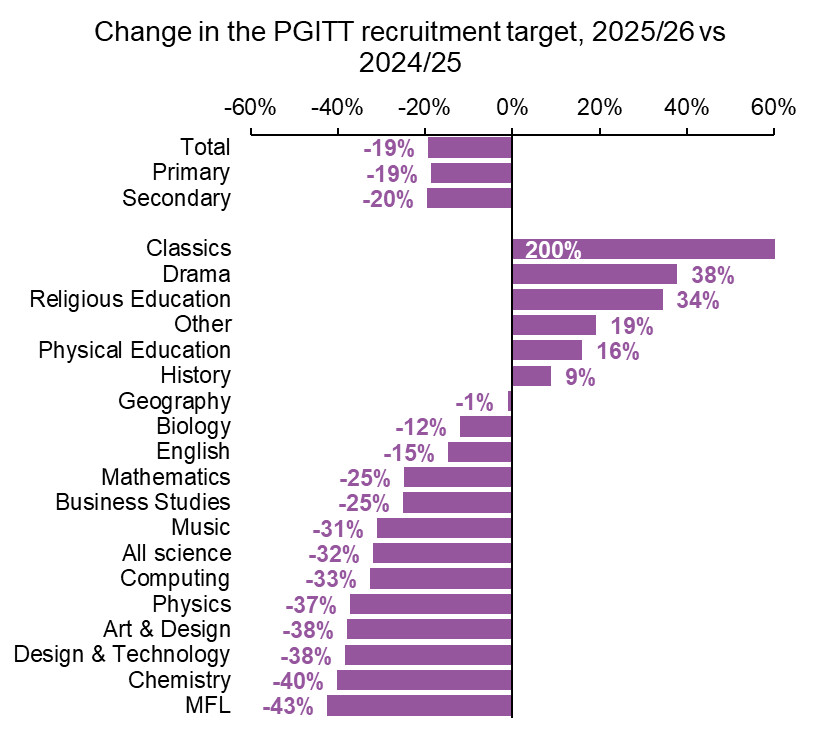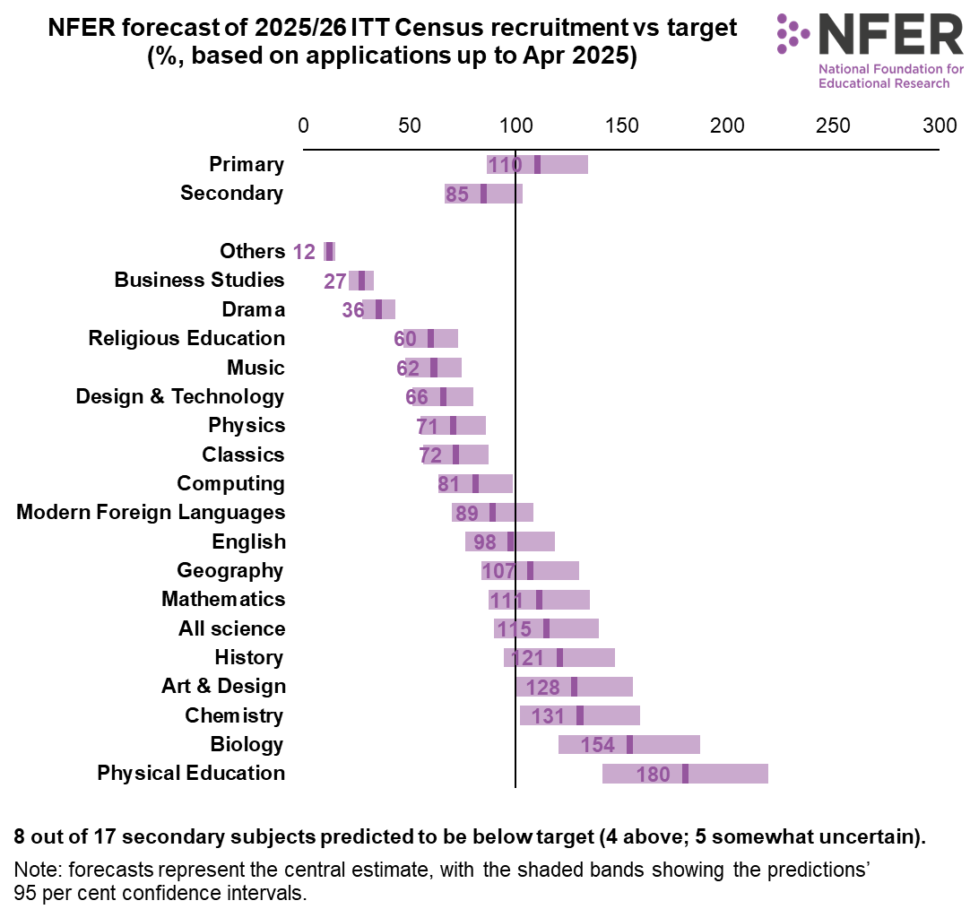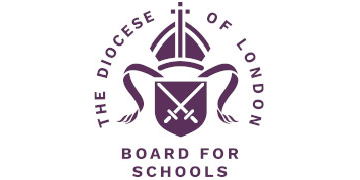The government has slashed its teacher recruitment targets by almost 20 per cent – as applicants to join the profession also rise this year across most subjects.
One expert has said the findings suggest the “decade long teacher supply problem may finally be coming to an end” – and provide a double boost for Labour’s pledge to help solve school recruitment woes.
In an update on Tuesday, the Department for Education revealed it is cutting its target for recruiting postgraduates to initial teacher training courses next year by 19 per cent.
This is due to “rapidly falling” pupil numbers, as well as “more favourable forecasts” for teacher retention.
It comes as analysis also shows a significant increase in teacher training recruits this year.
There are more accepted applicants at this stage of the recruitment process in every subject, except classics and English, than last year.
Teacher supply problem ‘may be coming to end’
Recruits for the STEM subjects computing and physics are 50 per cent higher.
John Howson, director of DataForEducation, said the “decade long teacher supply problem may be finally coming to an end”.
“Falling school rolls; underfunded pay settlements squeezing PTRs [pupil-teacher-ratios] … a tightening labour market in graduate level jobs mean good news for the DfE. The task then is to hang on to those teachers already in the system.”

DfE has reduced its target for secondary PGITT recruits to 26,920 for the next academic year – a reduction of 6,435 (19.3 per cent) on the current year’s target.
Meanwhile, the target for primary recruits has also been reduced by 1,750 (19 per cent).
The DfE says this is due in part to a boost in recruitment, which has led to “more favourable” secondary supply forecasts. The DfE said the recent 5.5 per cent pay rise is also expected to help improve retention.
Analysis by Jack Worth, education economist at the National Foundation for Educational Research (NFER), shows a significant increase in recruits, particularly at secondary level.
Worth said while bursaries to boost recruitment in key subjects were “impactful”, the rise could be due to subject retention payments “bedding in and acting as a recruitment boost”.
Other factors could be a cooling labour market, and the impact of last year’s 5.5 per cent pay rise, he added.

With the uptick in recruitment and target cuts, NFER’s overall forecast of ITT outcomes for September “is now looking much more positive”.
Secondary recruitment is expected to be around 85 per cent of its target – the highest since the 2020-21 Covid recruitment boom. Subjects such as maths, chemistry and biology are all expected to overrecruit.
Primary recruitment is also expected to beat its target, after last year’s underrecruitment.
Fall in English and classics applicants
The only two subjects that have seen a fall in accepted applicants this year are English (18 per cent) and classics (14 per cent).
While many bursaries have remained largely the same, bursaries for trainee English teachers were cut in half this year.
Following the rise in applicants, the DfE has cut PGITT recruitment targets for subjects such as physics, maths and chemistry – all of which have suffered from serious under-recruitment in recent years.

The chemistry target has been cut by 40 per cent after “more favourable chemistry retention and returner recruitment forecasts”.
The physics recruitment target has also been slashed by 37 per cent and maths by 25 per cent.
Paul Whiteman, general secretary at school leaders’ union NAHT, said the target cuts were “surprising”.
Just 62 per cent of the required number of secondary teachers were recruited last year, and secondary school pupil numbers are still rising, the National Audit Office has said.
“We need to understand more about how these targets have been calculated,” Whiteman added. “This is particularly important in light of the government’s ambition to recruit 6,500 more teachers.”
Worth described the changes as “hefty”, but pointed out that secondary targets have “in general been unusually high in the last few years”.
Religious education (RE) is among six subjects for which recruitment targets have been increased.
Paul Barber, director of the Catholic Education Service, said: “It’s encouraging that the government has recognised the undersupply of RE teachers and has increased its annual recruitment target.”
Despite expectations for future teacher demand being lowered, the DfE said it “remain[s] committed” to its election pledge of recruiting 6,500 new teachers.
Recruitment to PGITT “is key” to achieving this, they add.
Primary teacher jobs to slump?
Howson described this as a “tipping point” for teacher recruitment.
But he said data must be monitored closely to ensure teacher numbers, particularly in primary, do not fall so low pupils’ education suffers.
“We’re already seeing [for example] in London, lots of primary schools closing because of the falling birth rate,” he said.
“So we are going to see people looking twice at primary school teaching as a career? Because in the next few years, if the pay rises are unfunded, then all the improvement in things like pupil teacher ratios that have been over the last 25 years will start to unwind, and that will mean, if people leave, they’re not replaced, and fewer jobs.”








Two of my teaching colleagues are involved in the local PGCE and in school SCITT training and they are saying the complete opposite this and the picture they get across the sector locally is one of a real dearth of any teachers coming through and the ones that are tend to be not suitably qualified even for the SCITT or PGCE training.
That reduction in required teachers of 6435 is very close to the 6500 teachers Labour promised in their manifesto, as if by magic!